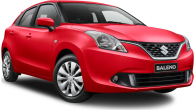Mazda has undergone a reincarnation in recent times with a raft of new and exciting models like the 3. The respected Japanese company has renewed its entire range in just six years or so, from the diminutive 2 in 2002 to the exhilarating RX8 in 2003, and then the 3 a year later.
The 3 replaced the highly regarded 323 in the old range, a car that had won the hearts and minds of many Australians over the previous 30 years, but brought with it a touch of the Mazda ‘Zoom-Zoom’.
MODEL WATCH
While it was a popular small car the 323 had lost much of its gloss by the time the 3 was launched amid Mazda’s ‘Zoom-Zoom’ renewal. As a result the 3 faced a big task. It had to win back 323 buyers to the fold and make new conquests to keep the Mazda resurgence zooming along.
At first glance the 3 was unmistakably new, from top to bottom, bumper to bumper. It looked good from all angles with its striking lines and balanced proportions. Mazda offered two body styles, a five-door hatch for the young and progressive, and a four-door sedan for older motorists who liked the familiarity and security a sedan offered. It not only looked different to the middle-of-the-road 323 it replaced, it was also bigger in all dimensions compared to its illustrious predecessor.
The larger exterior dimensions resulted in a roomier interior with good front and rear shoulder room and plenty of leg room for the five adults it’s capable of accommodating. Add to that a large and flexible luggage compartment, and a number of useful storage options and the Mazda 3 is more than capable of satisfying the needs of a modern family.
The upright design of the 3, along with a higher seating position also makes its easier to get in an out, an important consideration for ageing motorists who might be thinking of a 3.
There were two engines offered in the Mazda 3. The first was a 2.0-litre all-alloy, double overhead camshaft unit boasting 104 kW at 6000 revs and 181 Nm at 4500 revs, respectively 13 per cent and eight per cent more than the 1.8-litre engine in the old 323.
A 2.0-litre engine powered the Neo, Maxx and Maxx Sport models, but the sports SP23 had the extra zip of a 2.3-litre engine, which featured variable valve timing, and gave out 115 kW at 6500 revs and 203 Nm at 4500 revs.
Buyers could choose between a four-speed automatic tuned for lively acceleration, or a five-speed manual with improved synchronisers for smoother shifting and a cable shift for quieter operation and less vibration. Underneath there was new front and rear suspension that was tuned for a more dynamic drive, new electro-hydraulic power steering and more powerful brakes for better stopping.
The 3 range began with the Neo, which came with air, a CD player, remote central locking, tilt and reach adjustable steering column, and a height adjustable driver’s seat. Go to the Maxx and you got side and curtain airbags, ABS anti-skid brakes with electronic brakeforce distribution and emergency brake assist, alloy wheels, power windows and mirrors, a six in-dash CD player and steering wheel-mounted controls. If you went for the Maxx Sport you also got front fog lamps, side skirts, rear spoiler and 16-inch alloy wheels.
Then, at the very top of the range sat the SP23 sports hatch. It had everything, from a full body kit, 17-inch alloys, climate control air, sports trim, to a leather wheel and shift knob.
IN THE SHOP
Mazdas generally cause their owners little concern; they are robust and reliable. The only complaint that is regularly aired by owners is the level of road noise that is audible in the cabin. It is of more concern to hatch owners than it is to those who own sedans, but there’s little that can be done about it. Make the usual checks for evidence of a bingle, and carefully check around the fringes for parking scrapes.
Under the bonnet check the oil. Missed oil changes can lead to sludge and ultimately cause the demise of the engine. Make sure of servicing to ensure your car of choice has regularly seen the inside of a service garage during its life.
IN A CRASH
All models in the 3 range had dual-stage front airbags for the driver and passenger with seatbelt pretensioners, load limiters, and lap/sash belts for all five occupants. For more protection in the Neo you could option it up with a Safety Pack, which gave you front side and curtain airbags, anti-skid brakes with electronic brakeforce distribution and emergency brake assist. All of that came standard on the rest of the range.
AT THE PUMP
The Mazda3 is in the small car mix in terms of fuel consumption. It will return 8.5-9.0 L/100 km in manual form; the auto will sip about half a litre more per 100 km.
LOOK FOR
• Dynamic styling
• Roomy interior
• Zippy performance
• Good build quality
• Respected brand
THE BOTTOM LINE
Good-looking, well-built small car with plenty of room and economical performance.
RATING
78/100
Mazda 3 2004: Maxx
| Engine Type | Inline 4, 2.0L |
|---|---|
| Fuel Type | Unleaded Petrol |
| Fuel Efficiency | 8.9L/100km (combined) |
| Seating | 5 |
| Price From | $2,860 - $4,400 |
Pricing Guides






















.jpg)

.jpg)





































.jpg)

